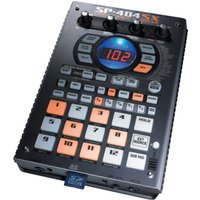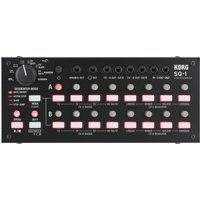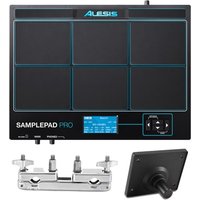In the dynamic realm of DJing, sampler effects have become an essential tool in the arsenal of both aspiring and professional DJs. These effects not only enhance the musical experience but also allow DJs to infuse creativity and personality into their sets. In this blog post, we’ll delve into what sampler effects are, their types, how they’re used in DJing, and some tips for DJs looking to incorporate these effects into their performances.

Understanding Sampler Effects
What are Sampler Effects?
Sampler effects, in the context of DJing, refer to the use of a device or software feature that records, manipulates, and plays back audio samples. Samples can range from musical loops, beats, vocal snippets, or any sound bite. The key is the ability to modify these sounds and integrate them seamlessly into a DJ set, creating a unique sound landscape.
Rolands sampler is a great example.
Types of Sampler Effects
- Loop Samplers: These allow DJs to repeat a section of music continuously, creating a loop. This effect is ideal for extending a beat or creating a buildup in a track.
- One-shot Samplers: Used for triggering short samples like sound effects or vocal hits. These samples play once and don’t loop.
- Multi-effects Samplers: Combine several effects like reverb, delay, or distortion that can be applied to a sample, enhancing its texture and feel.
- Drum Pads and Sequencers: Often part of DJ controllers, they allow DJs to trigger and sequence samples rhythmically, ideal for adding percussive elements.
- Granular Samplers: These chop samples into tiny grains and then manipulate them, creating ambient textures and unusual soundscapes.
Using Sampler Effects in DJ Sets
Enhancing Transitions
Samplers can be used to smooth transitions between tracks. For instance, a loop from the outgoing track can be overlaid with the incoming track, creating a seamless blend.
Adding Depth and Texture
Using background loops or atmospheric sounds can add depth to a track. This technique is particularly popular in genres like deep house or techno.
Live Remixing
DJs can use samplers to remix tracks on the fly. By triggering different samples and loops, they can create a unique version of a track.
Creating a Signature Sound
Many DJs use specific sounds or vocal snippets across their sets to create a signature style, making their performance instantly recognizable.
Tips for Using Sampler Effects
- Know Your Equipment: Whether you’re using hardware samplers or software, understanding the capabilities and limitations of your gear is crucial.
- Quality Over Quantity: It’s better to have a few well-chosen samples that fit your style than an overwhelming number of unused ones.
- Practice Timing: Timing is key in triggering samples. Practice to ensure your samples complement the tracks, not clash with them.
- Be Creative, But Tasteful: While it’s tempting to use a lot of effects, sometimes less is more. The goal is to enhance your set, not overshadow the music.
- Prepare Your Samples: Organize and cue your samples in advance. Being prepared means you can focus more on creativity during your performance.
Conclusion
Sampler effects offer DJs a playground of sonic possibilities, allowing for greater creativity and personalization in their sets. While they can seem daunting at first, with practice and experimentation, they can become an integral part of a DJ’s performance, elevating both the music and the experience for the audience. Whether you’re a beginner or a seasoned pro, exploring the world of sampler effects is a journey worth taking in the art of DJing.
CHECK PRICES AT ZZOUNDS



